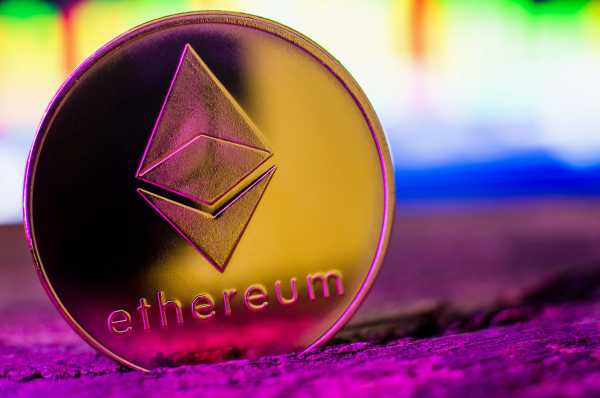Bitcoin Hashrate: New all-time high at 1.1 zettahash per second

The Bitcoin hashrate has reached a new all-time high. On September 2nd, the average computing power on the network climbed above 1.1 zettahash per second (ZH/s) for the first time. The 7-day average also exceeded this psychologically important threshold for the first time, reaching 1 ZH/s. This underscores the resilience of the Bitcoin network.
From 1 EH/s to 1 ZH/s: A decade in fast motion
To put this into perspective: 1 ZH/s corresponds to 1,000 exahashes per second. In 2016, the network exceeded the 1 EH/s mark for the first time. In less than ten years, the hash rate has increased a thousandfold.
There were setbacks in between, such as after the 2021 China mining ban, when the hash rate temporarily plummeted by almost 50 percent. But the industry quickly recovered and shifted its capacity to North America, Kazakhstan, and South America. The new record thus marks not only technical growth but also the geostrategic shift of an entire industry.
Back in April, the hash rate briefly exceeded the 1 ZH/s mark – the first time in Bitcoin's history. However, this peak remained only a snapshot. Only now has the seven-day average also crossed this threshold.
Want more than just reading the news? With the BTC-ECHO Plus+ annual subscription, you'll get the latest Nerdminer, worth €69, as a free bonus – so you can mine Bitcoin from home and immerse yourself in the Bitcoin experience. Exclusive content and a gadget that's really fun. Try it out! (While supplies last!)
Difficulty adjustment is imminent
The result of the new record performance: A difficulty adjustment of over seven percent is expected in the coming days – the second largest increase of the year.
This automatic rule system ensures that a new block is found on average every ten minutes – regardless of the amount of computing power used. However, this means increasing demands on miners: Those who want to keep up must use more modern hardware or utilize particularly inexpensive power sources.
Mining profitability under pressure
The increasing competition is reflected in profitability. According to a recent JPMorgan report, miners earned an average of $55,100 per EH/s in daily block reward revenue in August—a 4 percent decrease from July. Gross profit per EH/s even fell by 7 percent to $31,900.
Pressure on the industry is growing: Since the halving in April 2024, block rewards have fallen to 3.125 Bitcoin. Along with rising difficulty, margins are shrinking – despite high network security.
Miners rely on high-performance computing
Despite declining profit margins, the market capitalization of the 13 listed US miners tracked by JPMorgan rose to a record high of around $39 billion in August.
The reason: Many companies are diversifying. Firms like TeraWulf and IREN are investing in high-performance computing (HPC), particularly for applications in artificial intelligence. This dual strategy is intended to counteract fluctuating Bitcoin revenues with more stable cash flows.
In this analysis, we examined the opportunities current developments offer for listed mining stocks such as Marathon or Riot Platforms, and why they could even be considered more attractive than MicroStrategy: Bitcoin miners poised for a mega comeback: Should you invest in MARA and Co. now?
Focus on energy and sustainability
As the hashrate rises, the energy debate returns. Critics point to the network's high power consumption. Proponents argue that the mining infrastructure is increasingly relying on renewable and sustainable energy.
The Cambridge Bitcoin Electricity Consumption Index (CBECI) recently estimated the share of renewable energy in Bitcoin mining at around 40 percent (2022). The Bitcoin Mining Council (BMC) provided a significantly more optimistic figure in its most recent half-year report (H1 2023): According to the report, the share of renewable energy—including hydro, wind, solar, and geothermal—was just under 60 percent.
Global mining landscape
While North America is considered the dominant location, new regions are also gaining importance.
- Paraguay: Reservoirs provide cheap hydropower.
- Kazakhstan: Benefited after the China ban, but struggles with regulatory pressure.
- El Salvador: Attempts to make volcanic energy mining a national project.
Geographical diversification strengthens the resilience of the network – and makes it less dependent on political intervention.
Impact on the Bitcoin price
For investors, the rising hashrate has a double signaling effect:
- Long-term: A bullish sign. Higher hashrate means greater security and underscores Bitcoin's institutional appeal as a basic digital asset.
- Short-term: A burden for miners, who could be forced to sell Bitcoin holdings due to rising costs. This could put temporary pressure on the price.
The upcoming difficulty adjustment will show how resilient the industry is to the new pressures.
Network security: Discussion about mining pools
Parallel to the rising hash rate, the community is continually discussing the role of large mining pools. Some critics warn that the concentration of computing power among a few players theoretically poses risks.
Looking ahead: Hashrate 2028?
There is already speculation about how the hash rate might develop until the next halving in 2028. If growth continues, 2–3 hash rates per second would be realistic by then. However, not all miners will be able to keep up with this trend – competition is intensifying.
For Bitcoin itself, security and decentralization increase with every increase in hashrate. This strengthens the cryptocurrency's role as “digital gold” and could further fuel institutional inflows.
The new all-time high of Bitcoin's hashrate marks a milestone in the network's history. The 1 zettahash threshold in the 7-day average symbolizes the industry's professionalization and resilience.
For miners, however, this development presents challenges: rising costs, declining margins, and the need for diversification. For investors, however, it is a strong sign of Bitcoin's robustness and security, even if price pressure may arise in the short term.
Recommended Video Bitcoin weak and gold stronger than ever – Is this the opportunity?

Sources:
- Bitcoin hashrate data
- JPMorgan Research Report
- Cambridge Bitcoin Electricity Consumption Index (CBECI)



